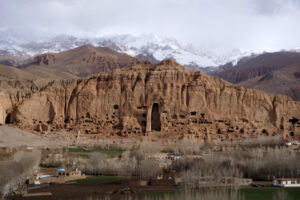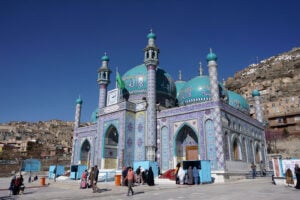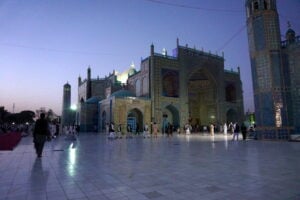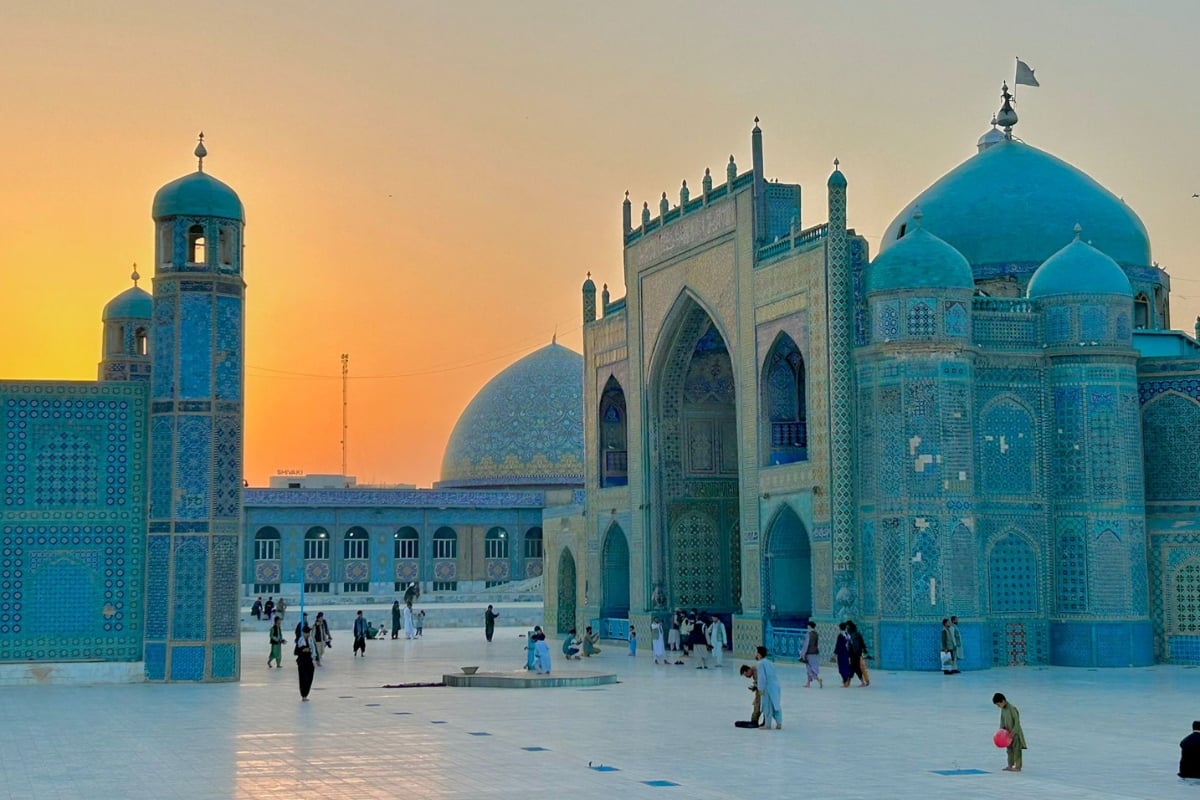Afghanistan: A torn paradise on earth
On vacation to Afghanistan – it sounds a bit crazy to many people. But Afghanistan has been a crossroads of different cultures for centuries. It was an important stopping place for travellers along the Silk Road. And that is still reflected in today’s culture and traditions. During a trip through Afghanistan, you will see beyond the turbulent current era and experience a beautiful country with a rich cultural history. You will also be hospitably received by locals who are curious and open to contact with the rest of the world.

Afghanistan
Name: Islamic Republic of Afghanistan
Capital: Kabul
Population: 42 million
Surface area: 652,864 km²
Language: Dari, Pashto
Neighbouring countries: China, Pakistan, Iran, Turkmenistan, Uzbekistan, Tajikistan






The preparation of our trip and the assessment and handling of the security was good, efficient and professional. We ‘d like to advise everyone who wants to visit Afghanistan or one of the other (challenging) destinations of CultureRoad to make use of the expertise and service of Rik and his team.
reinout prakke (The netherlands)
Kabul
Most Afghanistan trips start in the busy and overwhelming capital, Kabul. Scattered everywhere in the metropolis are street stalls, local markets and beautiful mosques. Few reminders of the Hippie Trail era remain visible, but some travellers still recognise a few landmarks. Kabul is now a bustling city where you can experience modern Afghanistan.
Blue Mosque in Mazar-e-Sharif
One of the most famous buildings in Afghanistan is located in the northern Afghan city of Mazar-e-Sharif. The 15th century mosque gets its name from the many blue and turquoise tiles that you see on its outside. The site is also the tomb of Ali ibn Abi Talib, the son-in-law of the prophet Mohammed – making it a very sacred place for Muslims.
Bamiyan and Band-i- Amir
Perhaps the most beautiful area in Afghanistan, in the middle of the country, is the Bamiyan region. Once, the large Buddha statues blown up by the Taliban in 2001 stood here. A few hours outside of Bamiyan you will find the Band-i- Amir National Park. Between these breathtaking mountainous landscapes with deep blue lakes, all the country’s problems seem very far away. In winter you can even ski in this region – who would have thought that?
Afghanistan is known as the hub of Central Asia. The country has a turbulent history with many conquests by various different empires and tribes. In about 300 BC, Alexander the Great conquered the area from the Persian Emperor Darius III. In the centuries that followed, Afghanistan moved from the Greek Kingdoms, to Buddhist influences from India, to the Mongol rule of Genghis Khan, to British influence at the beginning of the 20th century.
Independence
Afghanistan finally became independent in 1919. After a period of relative calm, a political coup occurred in 1973, followed five years later by the communist coup backed by the Soviet Union.
War and Enduring Effects
The coup was the beginning of a long war that ended when the Soviets withdrew in 1989. After several civil wars, the country fell to the Taliban in 1996. After the attacks of September 11, 2001, the United States started the ‘War on Terror’. Since then, Afghanistan has continued to suffer from external involvement and the threat of the Taliban, and remains largely unsettled to this day. Peace negotiations continue to run between the Afghan government, the United States and the Taliban, but have so far not led to peace.
Already know what you are looking for?
Blog posts about Afghanistan

How to celebrate Nowruz like a local
Discover how to celebrate Nowruz like a local in Iran, Kurdistan, Tajikistan, and Afghanistan. From jumping over bonfires and dancing in colorful outfits to sharing…

Explore the world’s best hidden travel destinations: top 9 must-see places
Tired of always being surrounded by crowds? This article dives into some of the most unexplored places on Earth, along with essential tips for traveling…

Best group tours for solo travelers
This article will describe the most unique and hard to reach destinations as a solo traveler. If you are looking for new adventures, then this…

Afghanistan visa – update 2024
Since the Taliban took control, there are now two different Afghan governments with embassies abroad. Some are still run by the old government (the Islamic…

Discovering Herat City: A Hidden Gem in Afghanistan
Herat city, nestled in the western part of Afghanistan, stands as a cultural treasure trove teeming with history, architecture, and vibrant traditions. Being one of…